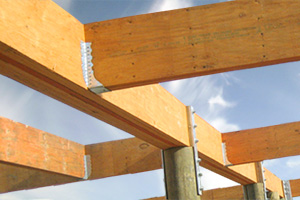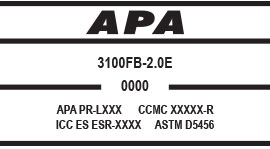Making the Best Use of Resources
 SCL Basics
SCL Basics
Structural composite lumber (SCL), which includes laminated veneer lumber (LVL), parallel strand lumber (PSL), laminated strand lumber (LSL) and oriented strand lumber (OSL), is a family of engineered wood products created by layering dried and graded wood veneers, strands or flakes with moisture-resistant adhesive into blocks of material known as billets, which are subsequently resawn into specified sizes. In SCL billets, the grain of each layer of veneer or flakes runs primarily in the same direction. The resulting products out-perform conventional lumber when either face- or edge-loaded. SCL is a solid, highly predictable and uniform engineered wood product that is sawn to consistent sizes and is virtually free from warping and splitting.
Common SCL Applications
Typical uses for SCL include rafters, headers, beams, joists, studs, columns and I-joist flange material. Two or three sections of SCL can be joined together to form 3-1/2-inch or 5-1/4-inch members. These thicker sections readily nest into 2x4 or 2x6 framed walls as headers or columns.
SCL Sizing
3/4" to 3-1/2" thick; depths and lengths to match the end use.
 The APA Mark of Quality
The APA Mark of Quality
APA trademarks appear only on products manufactured by APA member mills. The mark signifies that product quality is subject to verification through APA audit—a procedure designed to assure manufacture in conformance with APA performance standards or the standard shown in the mark.
SCL Publications
Excerpt from the Engineered Wood Construction Guide, Form E30. Includes product descriptions and specification recommendations for structural composite lumber.
Download >